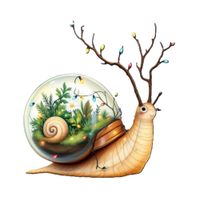Cork bottom terrariums are a beautiful way to bring greenery indoors, but they need special care to stay healthy. Here’s a simple guide to help you keep your terrarium thriving, plus solutions for common problems and tips on where to place it in your home.
Step-by-Step Care Instructions
1. Check Moisture Levels
- Look at the soil and moss. If they appear dry or the moss looks paler than usual, it’s time to water.
2. Watering Your Terrarium
- Use a spray bottle or bloom bottle to add a small amount of water.
- Focus on the soil and moss—make them damp, not soaked.
- Avoid overwatering. If unsure, wait rather than risk root rot.
3. Monitor Watering Frequency
- Cork-lidded terrariums may dry out faster, so check every 3–5 weeks.
- Only water when the soil and moss show signs of dryness.
- Closed terrariums can go for months without water, but moisture still escapes through the cork.
4. Watch for Condensation
- Some condensation on the glass is normal.
- If you notice excessive fogging, wipe the inside glass with a damp cloth and leave the lid off for a short period to let it dry out.
5. Provide Proper Lighting
- Place your terrarium in a spot with good natural, indirect light.
- Avoid direct sunlight, which can make the inside too hot and harm your plants.
6. Trim and Clean Regularly
- Trim plants periodically to encourage new growth and prevent them from touching the glass.
- Remove any dead or rotting vegetation to prevent mould.
7. Clean the Glass
- Wipe the inside of the glass with a damp cloth as needed to remove mineral buildup and keep your view clear.
Troubleshooting Common Problems
Excess Condensation
- Cause: Overwatering or poor ventilation.
- Solution: Open the lid for a few hours to let moisture escape. Reduce watering and move the terrarium to a cooler spot if needed.
Wilting or Rotting Plants
- Cause: Overwatering or unsuitable plant types (e.g., succulents in closed terrariums).
- Solution: Water less often, replace succulents with humidity-loving plants like ferns or mosses, and ensure proper drainage.
Mould or Fungi
- Cause: Excess moisture, poor air circulation, or dead plant material.
- Solution: Remove affected areas with tweezers. Use a cotton swab with hydrogen peroxide for stubborn spots. Add springtails or isopods to help control mould naturally.
Yellow or Brown Leaves
- Cause: Too much or too little water, or too much sunlight.
- Solution: Adjust watering and move the terrarium to a spot with indirect light.
Unwanted Insects
- Cause: Moss or soil may contain larvae.
- Solution: Remove visible insects. For aphids or flies, leave the cork off and place a small glass of vinegar nearby to attract and trap them.
Best Locations for Your Terrarium Indoors
Ideal Spots:
- Near north-facing or east-facing windows for consistent, indirect light.
- On a bookshelf, coffee table, desk, or in a bathroom or kitchen with good light.
- Away from direct sunlight, radiators, air conditioners, and drafts.
Avoid:
- windows with strong direct sun.
- Entryways with temperature fluctuations.
- Near heat sources or cold drafts.
Extra Tip:
- If natural light is limited, use an artificial grow light to supplement.
Final Tips:
The most common mistake is overwatering. Always check the soil and moss before adding water and remember less is more! With these steps and troubleshooting tips, your cork bottom terrarium will stay healthy and beautiful for months to come.
